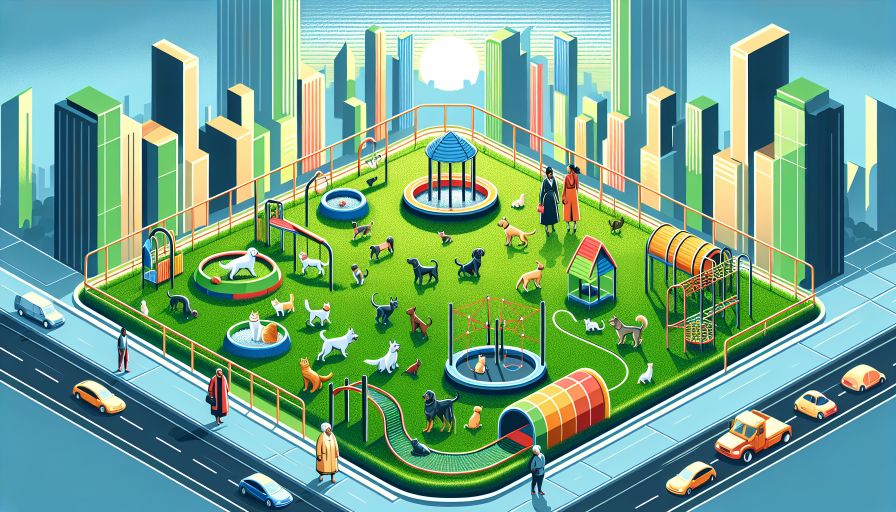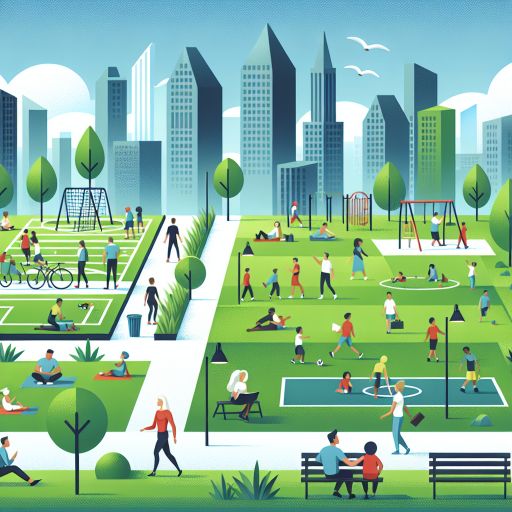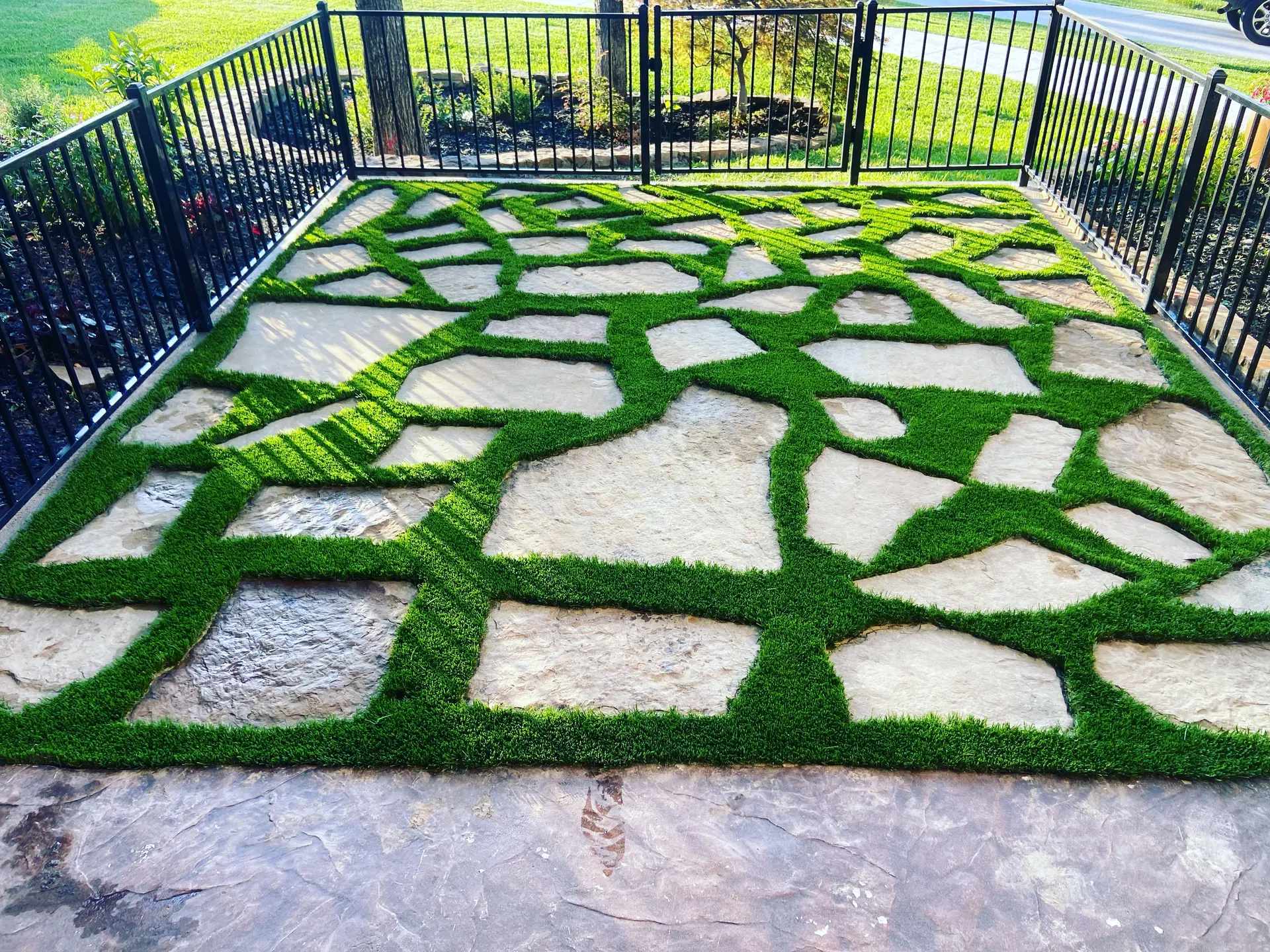
- The Rise of Urban Pet Playgrounds: A Historical Context
- The Benefits of Artificial Grass in Urban Parks
- Technological Advances in Synthetic Turf
- Environmental Impact and Sustainability Considerations
- Case Studies and Implementations in Major Cities
- Future Trends and Predictions in Urban Pet Playgrounds
The Rise of Urban Pet Playgrounds: A Historical Context
Urban pet playgrounds have become increasingly popular over recent decades, reflecting broader social and demographic shifts. Historical context provides valuable insight into understanding this trend and its implications.
Traditionally, city parks were designed primarily for human recreation, with amenities like playgrounds, sports fields, and picnic areas. However, as urban populations have grown, so too has the number of pet owners living in these densely populated areas. According to data from the American Pet Products Association, pet ownership in the United States alone has increased significantly, with an estimated 67% of households owning a pet in recent years.
The increase in pet ownership has driven the demand for dedicated spaces where pets can exercise, socialize, and play safely. Urban planning has responded to these needs by incorporating pet-friendly areas into city parks. The first designated off-leash dog park in the United States, Ohlone Dog Park, opened in Berkeley, California, in 1979. Since then, the number of urban dog parks has risen dramatically. The Trust for Public Land reported in 2019 that the number of dog parks in the largest U.S. cities had grown by nearly 74% over the past decade.
Parallel to the rise of urban pet playgrounds, technological advancements and changing attitudes towards pet care have also played significant roles. Early parks were often simple, unfenced grassy areas, but modern pet playgrounds are thoughtfully designed with features like agility equipment, splash pads, and specialized surfaces that cater specifically to pets’ needs. These enhancements reflect an evolving understanding of pets as integral family members requiring their own dedicated recreational spaces.
Additionally, urban pet playground development has been influenced by broader ecological and social factors. The importance of providing green spaces in cities for health, well-being, and community cohesion has been well documented. For instance, research by the Urban Land Institute highlights that green spaces serve as essential urban lungs, promoting physical activity and providing mental health benefits.
In this context, the rise of urban pet playgrounds can be seen not merely as a response to pet ownership trends but as part of an integrated approach to urban planning that considers the needs of all community members, including pets. This historical perspective underscores the multi-faceted value of urban pet playgrounds and sets the scene for exploring how innovations like artificial grass are shaping their future.
The Benefits of Artificial Grass in Urban Parks
Integrating artificial grass into urban parks offers a multitude of benefits, especially when considering the needs of pet-friendly environments. One of the primary advantages is the durability and low maintenance of synthetic turf. Unlike natural grass, artificial turf does not require watering, mowing, or fertilization, making it a cost-effective and environmentally friendly choice for city planners.
The installation of synthetic turf also addresses several hygiene and safety concerns. Traditional grass areas can become muddy and unsanitary, particularly in high-traffic zones like dog parks. Artificial grass, however, provides a clean and even surface that can be easily sanitized. Brands like Prime Design Turf utilize non-toxic materials in their products, creating a safer environment for pets and their owners.
Moreover, artificial grass offers exceptional resilience. It can withstand heavy use without becoming patchy or worn out, ensuring that park areas remain visually appealing and functional year-round. This is particularly beneficial in urban settings where space is limited and high usage is common. Companies like Prime Design Turf bring over 20 years of experience to the table, ensuring meticulous installation that maximizes both aesthetic and practical benefits.
Another significant benefit is the versatility of synthetic turf. Prime Design Turf has demonstrated how artificial grass can be tailored to fit various applications, from creating safe playgrounds to designated pet zones. This adaptability means that urban parks can serve multiple functions without compromising on quality or safety.
Cost-effectiveness is another important factor. While the initial installation of synthetic turf may be higher than natural grass, the long-term savings are substantial due to reduced maintenance and water costs. Additionally, companies like Prime Design Turf offer competitive pricing, making high-quality turf accessible to a wide range of clients.
In conclusion, the integration of artificial grass in urban parks provides a robust solution to many of the challenges faced in designing pet-friendly urban environments. The benefits of durability, low maintenance, hygiene, safety, and versatility make it an excellent choice for city planners and park designers. With industry leaders like Prime Design Turf setting the standard with their experience and commitment to quality, the future of urban pet playgrounds looks promising.
Technological Advances in Synthetic Turf
Recent years have seen significant technological advancements in synthetic turf, making it a viable and increasingly popular option for urban pet playgrounds. These advancements focus on durability, comfort, and environmental impact, enhancing both the user experience and the lifespan of the turf.
One of the most notable improvements is the development of multi-layered infill systems. These systems often include a combination of sand, rubber, and organic materials that provide better shock absorption and reduce the wear and tear on the synthetic grass blades. This enhances comfort for pets, reducing the risk of injuries that may arise from hard surfaces.
Additionally, UV-resistant coatings have been integrated into synthetic turf fibers. These coatings help maintain the color and structural integrity of the grass even under prolonged exposure to sunlight. This is particularly important in urban settings where parks and playgrounds are subjected to continual use and varying weather conditions.
Advanced manufacturing techniques have also enabled the creation of biodegradable and recyclable synthetic turfs. These eco-friendly options help address environmental concerns associated with traditional synthetic materials, offering a more sustainable choice for city planners and park designers.
In terms of safety, advancements in anti-microbial treatments are noteworthy. Modern synthetic turfs often come with built-in anti-microbial properties that help inhibit the growth of bacteria and fungi, ensuring a cleaner and healthier environment for pets. This is particularly critical in communal areas where high traffic may otherwise increase the risk of disease transmission.
The use of innovative cooling technologies is another major development. Heat-reflective materials and cooling infill options can lower surface temperatures, ensuring that the turf remains comfortable even during the hottest months. This is vital in urban environments where the heat island effect can exacerbate temperature extremes.
Moreover, advancements in fiber technology have led to the creation of long-lasting and highly realistic synthetic grass blades. These new fibers mimic the appearance and texture of natural grass, enhancing the overall aesthetic appeal of pet playgrounds. This not only creates a more visually pleasing environment but also encourages more natural pet behavior.
Finally, the integration of smart drainage systems ensures that synthetic turfs are well-prepared to handle rain and other forms of moisture. These systems facilitate rapid water evacuation, preventing waterlogging and reducing maintenance requirements. Efficient drainage further contributes to the safety and usability of the playground, making it accessible in various weather conditions.
In conclusion, these technological advancements in synthetic turf are paving the way for more practical, sustainable, and enjoyable urban pet playgrounds. They address many of the limitations associated with earlier versions of synthetic grass, making them an increasingly attractive option for city parks dedicated to pet use.
Environmental Impact and Sustainability Considerations
Urban spaces are increasingly integrating artificial grass into their park designs, and it is crucial to assess the environmental impact and sustainability of these materials. Synthetic turf offers several ecological advantages and poses certain challenges that need thorough examination.
Environmental Advantages of Artificial Grass
- Water Conservation: Artificial grass significantly reduces water consumption as it does not require regular irrigation, unlike natural grass. According to the Environmental Protection Agency (EPA), landscape irrigation accounts for nearly one-third of all residential water use, totaling nearly 9 billion gallons per day. Synthetic grass can markedly cut down this consumption.
- Reduction of Chemical Use: The necessity for fertilizers, pesticides, and herbicides is eliminated with artificial turf. This reduces chemical runoff into local waterways, which can be beneficial for the surrounding ecosystem.
- Durability: Artificial grass can last for years with minimal maintenance, reducing the frequency of replacements and the associated environmental costs of producing and transporting new materials.
Challenges and Considerations
Despite its advantages, there are environmental concerns associated with synthetic turf that must be addressed:
- Heat Retention: Artificial grass can retain more heat than natural grass, potentially contributing to the urban heat island effect. This can be mitigated by incorporating shading elements such as trees or canopies.
- Microplastics: Over time, synthetic turf may break down into microplastics, which can pose environmental and health risks. This underscores the importance of choosing high-quality materials and considering end-of-life disposal options.
- End-of-Life Disposal: The disposal of artificial grass can be challenging as it is not biodegradable. Manufacturers are exploring recycling options, but these are not universally available or cost-effective at present.
Comparative Table: Environmental Aspects
| Factor | Impact of Artificial Grass |
|---|---|
| Water Usage | Significantly reduced |
| Chemical Usage | Eliminated |
| Heat Retention | Higher |
| Microplastics | Potential risk |
| End-of-Life Disposal | Challenging |
In conclusion, while artificial grass offers several environmental benefits such as water conservation and reduction of chemical use, it also presents challenges including heat retention, microplastic generation, and disposal issues. Considering these factors is vital for sustainable urban park management and the informed integration of synthetic turf in urban pet playgrounds.
Case Studies and Implementations in Major Cities
Several major cities around the world have successfully implemented artificial grass in urban pet playgrounds, proving its viability in diverse environments. These case studies reflect the growing trend and positive outcomes of incorporating synthetic turf into urban settings for pets.
New York City has been at the forefront of this movement, most notably with the installation of artificial grass in Randall’s Island Park. The park’s synthetic turf dog runs have been highly effective in providing a clean, durable, and low-maintenance surface for pet activities. This installation has significantly reduced mud issues and wear-and-tear commonly seen with natural grass, especially in high-traffic urban areas.
In Los Angeles, the Griffith Park Dog Park features artificial grass, offering a resilient surface that stands up to heavy use. The synthetic grass requires less water and fewer chemical treatments compared to natural grass, aligning with the city’s sustainability goals. Maintenance staff have noted the ease of upkeep and the consistent quality of the play surface, even during dry seasons.
Chicago‘s Montrose Dog Beach is another example where synthetic turf has proven beneficial. By installing artificial grass in high-traffic zones near the beach, the city has effectively minimized erosion and reduced the amount of sand tracked into nearby areas. This has enhanced both the aesthetic appeal and functionality of the space for dog owners and their pets.
In Toronto, the Cherry Beach Clarke Dog Park’s artificial grass installation has addressed issues related to Canada’s varied climate, where natural grass can suffer during extreme weather conditions. The synthetic turf has provided a consistent surface for year-round use, ensuring that dogs have a reliable area to play, regardless of the season.
In particular, London‘s Queen Elizabeth Olympic Park showcases how artificial grass can be integrated into larger, multi-use urban spaces. The dog-friendly areas with synthetic turf not only serve pet owners but also harmonize with the park’s overall landscape design. This implementation highlights the material’s versatility and integration capability within mixed-use urban park settings.
These case studies illustrate the practical applications and benefits of artificial grass in urban pet playgrounds across different climates and city layouts. The success stories from New York City, Los Angeles, Chicago, Toronto, and London suggest a promising future for synthetic turf as a key element in urban park planning, benefiting both the environment and urban pet communities.
Future Trends and Predictions in Urban Pet Playgrounds
The future of urban pet playgrounds is set to evolve significantly with the integration of artificial grass, driven by a combination of technological advancements, increased urbanization, and the growing pet-friendly culture.
Growing Demand for Pet-Friendly Spaces
As the number of pet owners in urban areas continues to rise, the demand for pet-friendly recreational spaces is also increasing. According to data from the American Pet Products Association, pet ownership in the U.S. reached an all-time high in recent years, with approximately 70% of households owning a pet. This upward trend is pushing city planners to innovate and create more inclusive environments for both people and their pets.
Technological Enhancements in Artificial Grass
The future of artificial grass is marked by continuous innovations that make it more suitable for urban pet playgrounds. Newly developed synthetic turfs are designed to be more durable, easier to clean, and safer for animals. These advancements include:
- Improved drainage systems to prevent waterlogging and reduce maintenance requirements.
- Enhanced materials that are non-toxic and hypoallergenic, ensuring the safety of pets.
- Built-in antimicrobial properties to minimize the spread of bacteria and odors.
Smart Integration with City Infrastructure
With urban areas becoming smarter, the integration of artificial grass into city parks is expected to include technology-driven solutions. For instance, IoT (Internet of Things) devices could be employed to monitor the condition of these surfaces, ensuring optimal maintenance and enhancing user experience. Data collected from these devices can provide insights into usage patterns, helping urban planners optimize the design and placement of pet playgrounds.
Sustainability and Environmental Considerations
Future trends also point towards an increased focus on sustainability. Synthetic turf manufacturers are developing eco-friendly products made from recycled materials. Additionally, these turfs are designed to minimize water usage and reduce the need for chemical treatments, thus aligning with broader environmental goals.
Public Perception and Adoption
Public acceptance of artificial grass in pet playgrounds is crucial for its widespread adoption. City councils and local governments are engaging in awareness campaigns to educate residents about the benefits and safety of synthetic turf. Survey data indicates that when informed about the advantages, a significant portion of the population shows a positive attitude towards the use of artificial grass in pet-friendly areas.
Conclusion
The integration of artificial grass in urban pet playgrounds is poised to become more prevalent as technological innovations continue to improve the functionality and safety of synthetic turf. Combined with a growing demand for pet-friendly spaces and a focus on sustainability, the future of urban pet playgrounds looks promising. City planners, manufacturers, and residents must collaborate to ensure that these spaces meet the needs of both pets and their owners while aligning with environmental and urban development goals.


